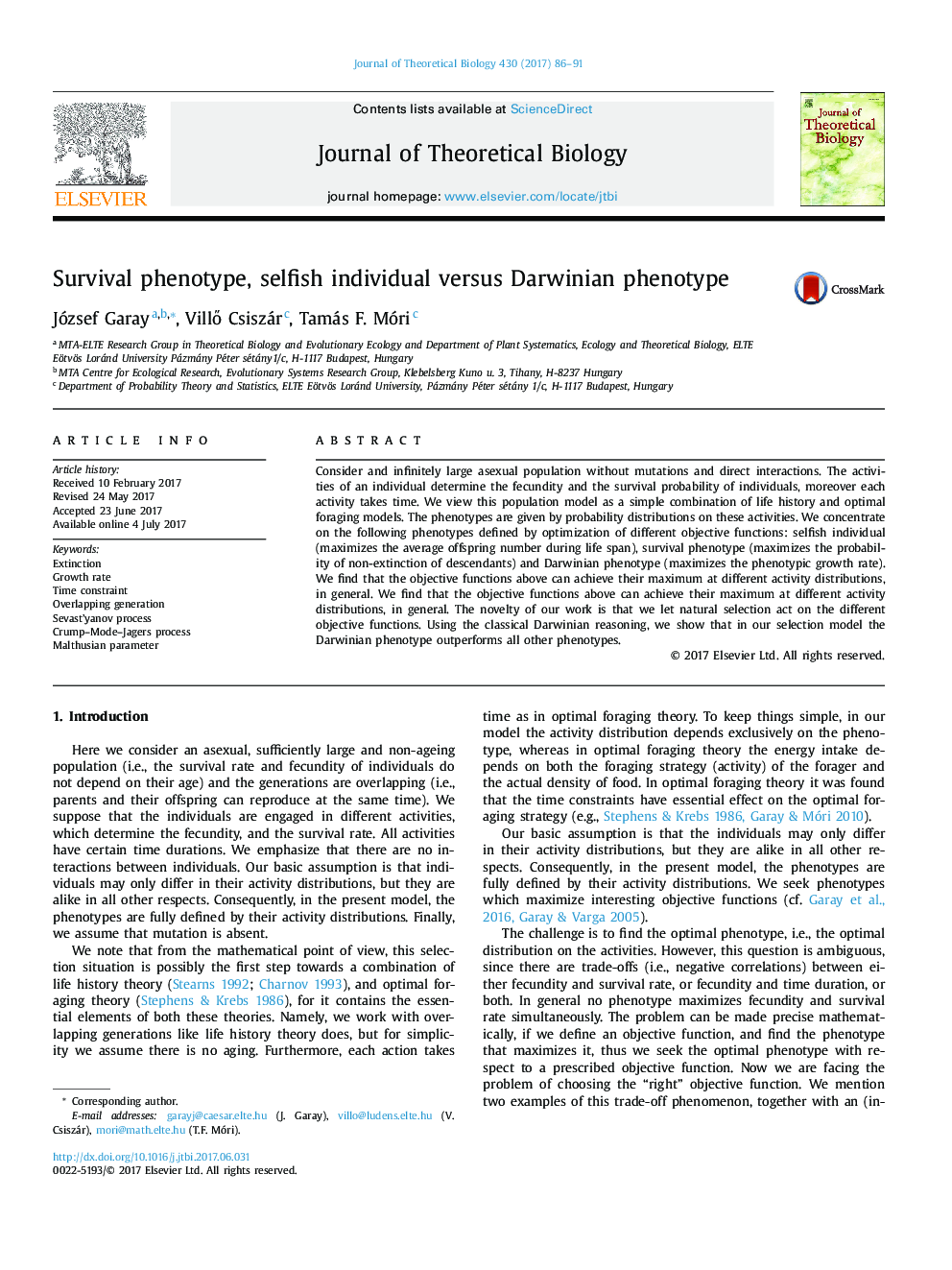| Article ID | Journal | Published Year | Pages | File Type |
|---|---|---|---|---|
| 5760321 | Journal of Theoretical Biology | 2017 | 6 Pages |
Abstract
Consider and infinitely large asexual population without mutations and direct interactions. The activities of an individual determine the fecundity and the survival probability of individuals, moreover each activity takes time. We view this population model as a simple combination of life history and optimal foraging models. The phenotypes are given by probability distributions on these activities. We concentrate on the following phenotypes defined by optimization of different objective functions: selfish individual (maximizes the average offspring number during life span), survival phenotype (maximizes the probability of non-extinction of descendants) and Darwinian phenotype (maximizes the phenotypic growth rate). We find that the objective functions above can achieve their maximum at different activity distributions, in general. We find that the objective functions above can achieve their maximum at different activity distributions, in general. The novelty of our work is that we let natural selection act on the different objective functions. Using the classical Darwinian reasoning, we show that in our selection model the Darwinian phenotype outperforms all other phenotypes.
Related Topics
Life Sciences
Agricultural and Biological Sciences
Agricultural and Biological Sciences (General)
Authors
József Garay, VillÅ Csiszár, Tamás F. Móri,
